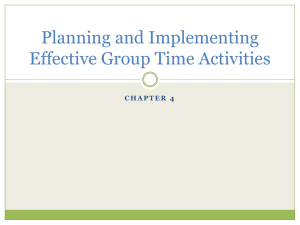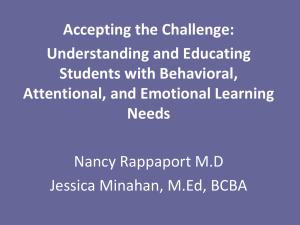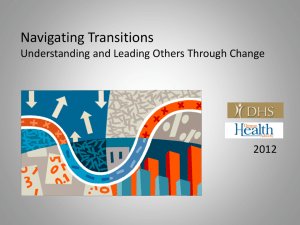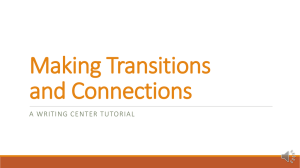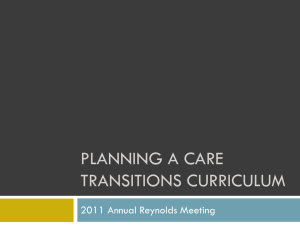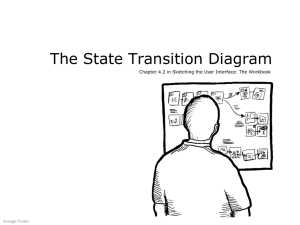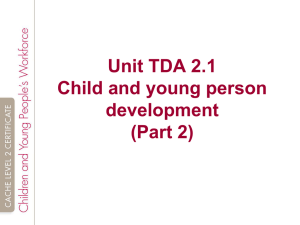PowerPoint
advertisement
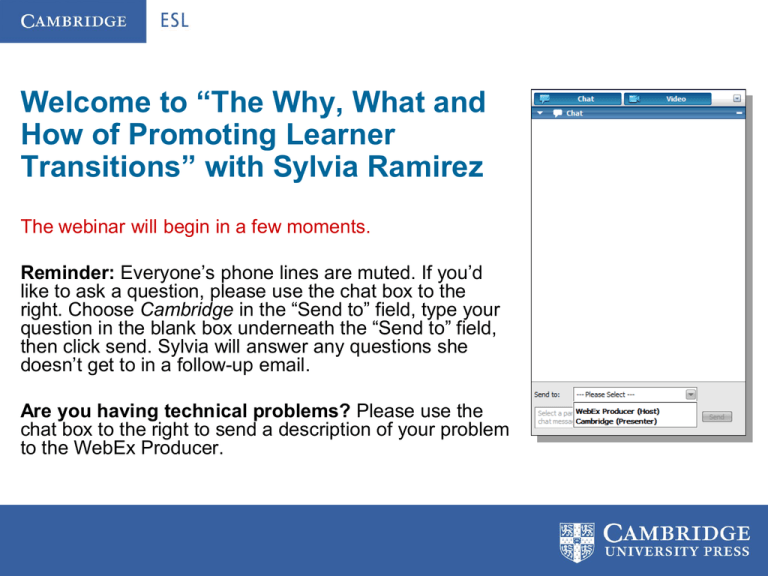
Welcome to “The Why, What and How of Promoting Learner Transitions” with Sylvia Ramirez The webinar will begin in a few moments. Reminder: Everyone’s phone lines are muted. If you’d like to ask a question, please use the chat box to the right. Choose Cambridge in the “Send to” field, type your question in the blank box underneath the “Send to” field, then click send. Sylvia will answer any questions she doesn’t get to in a follow-up email. Are you having technical problems? Please use the chat box to the right to send a description of your problem to the WebEx Producer. The Why, What and How of Promoting Learner Transitions Presented by Sylvia G. Ramirez MiraCosta College Noncredit ESL Department Chair and Ventures Author Today we are joined by 125+ attendees in 25 states. • Community Colleges • Adult Ed Programs • Community Based Organizations • Job Training Centers • Language Centers Webinar Objectives: • Discuss WHY transition programs have become increasingly important. • Describe WHAT are key components of a successful transition program. • Identify HOW academic skills are taught in a transition class. Why Transitions? POLICY “ . . . Adult education should be redesigned to promote postsecondary and work-place readiness for all learners . . .” National Center on Education and the Economy (2009) Why Transitions? POLICY “…Tonight, I ask every American to commit to at least one year or more of higher education or career training. This can be community college or a four-year school; vocational training or an apprenticeship. But whatever the training may be, every American will need to get more than a high school diploma.” President Barack Obama (February 2009) Why Transitions? ECONOMIC “….there will be 2.7 million “middle skill” job openings for Californians. Middle skill jobs require more than a high school diploma and less than a Bachelor’s degree.” Skills2Compete – California’s Forgotten Middle-Skill Jobs: Meeting the demands of a 21st century economy. (2009) Why Transitions? • Our programs need to prepare students for the future. • If our programs fail to provide students with the skills needed to be successful in postsecondary education, then we have increasingly relegated our students to the “working poor.” Why Transitions? STUDENT Dear Teacher Ramirez, It has certainly been a long time since we last touched base with each other. I am emailing you to share with you the news of my PhD graduation. Former ESL Student, Alfredo Martinez-Morales Questions • To ask a question, go to the “chat” section on the righthand side of your screen. • Next to the “Send To” pick list, select “Cambridge” • Type your question in the box below “Send To” • Then hit send (on the right) What do you think? Key Components of Transition Programs • • • • Program structure Formal or informal agreements Curriculum Alignment Transition Support Where Do Students Transition To? • • • • ABE/GED classes Academic credit and career technical courses Job-skills training programs The workplace Program Structure at MiraCosta College • We implemented 8-week terms and student learning outcomes for each level. http://www.miracosta.edu/noncreditESL • Advanced level students exit the program when they meet level 7 SLOs. (100 – 150 ESL students exit per year). Know Where You Are Transitioning Students • • • • Placement tests, course pre-requisites Course catalogue – sequence of courses Course syllabi and books used Meetings with college instructors Faculty at MiraCosta College • Hired full-time credit and noncredit faculty members • Meet regularly to discuss curriculum and student needs and goals • Piloted credit portfolio assessments with noncredit students • Visited Level 7 students regularly Transition Support Counseling, Advising, Coaching – Students create an education and career plan – Students make personal connections Transition Support • Provide presentations on financial aide, registration, academic support services. • Select additional activities such as college tours class visits, college activities, student success workshops. • Provide onsite testing and assistance in completing applications What do you think? How Academic Skills Are Taught? Some common skills identified in multiple studies are: a Writing a Reading a Vocabulary Building Skills a Critical Thinking/ Problem Solving a Listening/Note taking College / Career Success Skills • Goal Setting • Career Exploration • Time Management • Stress Management • Problem Solving • Self Advocacy • Study Skills MiraCosta Curriculum MCC Faculty Agreement on Top 7 Skills Essential for Student Success 1) Writing • Writing Process • Portfolios 2) Reading • Vocabulary strategies • Identifying main ideas • Skimming and scanning 3) Critical Thinking • Making inferences MiraCosta Curriculum (cont.) 4) Study and Learning Skills • • • • Graded homework and end of term grades Encouraging self efficacy skills Group work Class participation 5) Grammar and Usage MiraCosta Curriculum (cont.) 6) Oral Communication Skills • Individual and group presentations 7) Listening • Note taking (guided handouts) MiraCosta Curriculum • El Civics Education Unit - complete credit application and select courses • Collaboration among credit and noncredit faculty meet to align curriculum • Portfolio Assessments See Portfolio Assessment at: http://www.miracosta.edu/noncreditESL “The skills learners need in order to transition successfully to higher levels of education or employment should be integrated at every level of instruction ….” Betsy Parrish and Kimberly Johnson Promoting Learner Transitions to Postsecondary Education and Work (2010) Writing Skills • Text organization (rhetorical style) • Summary skills Text Organization Ventures Transitions P. 60, Ex. 1C Text Organization Ventures Transitions P. 21, Ex. B Text Organization Ventures Transitions P. 101, Ex. 1D (Text Organization: Problem / Solution) Summary Ventures Transitions P. 31, Ex. D Reading Comprehension Skills • Predicting • Ask Questions • Use Graphic Organizers . Predicting P. 18, Ex. 1, question 1 P. 56, Ex. 1, question 1 Reading Comprehension: Ask Questions P. 7, Ex. A Use Graphic Organizers To Analyze Text Ventures Transitions P. 30, Ex. 1B Vocabulary Building Skills • Use contextual clues to define vocabulary • Draw on grammar to determine meaning • Use a dictionary Use Contextual Clues To Define Vocabulary P. 87, Ex. 3B (positive & negative words & clues to help students find them) Draw On Grammar To Determine Meaning P. 89, Ex. 3B: (parts of speech) Use Dictionary for Various Purposes P. 27, Ex. 3B Critical Thinking & Problem Solving • Analyze & apply information learned • Articulate and support points of view • Solve problems Critical Thinking Skills: Analyze & Apply Information Learned P. 9 Ex. 3A Critical Thinking Skills: Analyze & Apply Information Learned P. 19 Ex. 3A Critical Thinking Skills: Articulate & Support Points of View P. 13, Ex. 2D Critical Thinking Skills: Problem Solving P. 101 Ex. 1D Critical Thinking Skills: Problem Solving P. 70 Ex. B, C Listening Skills • Listening for main ideas • Note taking Listening For Main Idea Main Idea: All Lesson As, Ex. 2A Listening: Note Taking Details: all Lesson As Ex. 2B What do you think? Questions • To ask a question, go to the “chat” section on the righthand side of your screen. • Next to the “Send To” pick list, select “Cambridge” • Type your question in the box below “Send To” • Then hit send (on the right) For additional Ventures Transitions resources, please visit: www.cambridge.org/transitions Webinar Materials www.cambridge.org/ventures/webinars • Post-webinar email - All handouts - PowerPoint Slides - Webinar Recording - Q&A • Access to recordings of previous webinars Q&A Thank you for attending, and good luck with your ventures in transitioning students! Please tell us about your experience by filling out our survey. It will appear in this window in just a moment.

